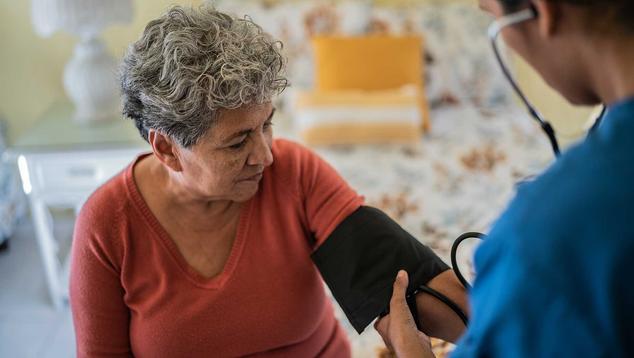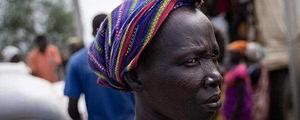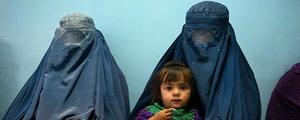The following article is based on results from the Year 2 report on the Hologic Global Women's Health Index, a comprehensive global survey on women's health.
Preventive care is crucial to promoting women's health and wellbeing. The right test or screening can save lives, helping women and girls be healthy and live longer. At present, preventive care remains inaccessible to many women and girls globally.
The Hologic Global Women’s Health Index -- a global survey of women and men that asks questions related to women’s health -- suggests that billions of women missed out on getting tested or screened for high blood pressure, cancer, diabetes, and sexually transmitted diseases or infections (STDs/STIs) in both 2020 and 2021.
In the second year of this survey, 60% of women surveyed -- representing about 1.5 billion women worldwide -- reported they had not been tested for any of these four diseases and conditions in the past 12 months. This percentage is similar to the 61% of women who reported not being tested in 2020.
Inequities in Preventive Care Became Worse in 2021
Testing and screening recommendations for these diseases and conditions vary based on a person’s age, gender, and the healthcare resources available to them in their country and region. The 12-month period asked about in the survey question is not a globally agreed-upon cadence of care, as intervals for tests and screenings vary worldwide. Year 2 findings capture testing that was completed within a two-year period.
Testing rates for these four deadly diseases and conditions remained low for women in all country income groups in the second year. The survey shows women living in low-income economies fell further behind their higher-income counterparts on preventive care.
While testing rates among women in high-income and upper-middle-income economies improved -- or at least remained stable -- from 2020 to 2021, rates dropped even lower for women in low-income economies. This suggests disparities and inequality in care increased from 2020 to 2021.
Few Women Screened for No. 1 Killer
Heart disease is the leading cause of death worldwide, yet 34% of women in 2021 said they were tested for high blood pressure in the past 12 months. When high blood pressure is untreated, it can lead to heart disease, heart attack and stroke. The low testing rates are essentially unchanged from 2020, when 33% of women said they had been tested. Thus, in both 2020 and 2021, approximately 1.7 billion women went untested for high blood pressure each year.
Testing rates for high blood pressure varied across the globe in the study’s second year, from a low of 8% in Togo to a high of 74% in Latvia -- which also had the highest percentage of reported preventive care uptake in 2020 (at a similar 76%).
More Than 2 Billion Women Not Tested for Any Type of Cancer
Early detection reduces the cancer burden in the world. Globally, cancer is the second-leading cause of death. However, just 12% of women said they were tested for any type of cancer in 2021. This percentage is unchanged from 2020, meaning more than 2 billion of the world’s women were not screened for cancer in either 2020 or 2021.
Like high blood pressure, testing for cancer varies widely around the globe, from a low of less than 1% in Pakistan and Afghanistan to a high of 38% in South Korea.
Testing rates for Pakistani women were unchanged from 2020 to 2021, highlighting the need for better reporting and awareness in a country where breast cancer rates are thought to be the highest in Asia. In neighboring Afghanistan, no women or girls -- zero female respondents -- said they were tested for any type of cancer in the study’s second year.
South Korea led the world in reported cancer screening in both 2020 and 2021. The country’s relatively high rate of testing (38% in both years) may reflect the availability of cancer screening through its National Cancer Screening Program, which has provided low-cost and free cancer screening for decades.
More Than Eight in 10 Women Untested for Diabetes
Diabetes is a leading cause of death for women -- and one of the fastest-growing chronic diseases in the world. The Index showed fewer than one in five women (19%) in 2021 said they were tested for diabetes in the past 12 months. This rate is unchanged from 2020, meaning roughly 2 billion women went untested in both 2020 and 2021.
Testing for diabetes varied across the globe, from a low of 3% in Ivory Coast -- where diabetes is the ninth leading cause of death and disability -- to a high of 49% in Latvia, where the disease accounted for 2% of deaths in 2018.
Women Tested Infrequently for STDs/STIs
STDs/STIs can have serious long-term health consequences -- particularly for women -- including infertility, contracting HIV and an increased risk of cervical cancer related to HPV. However, only about one in nine women (11%) in 2021 said they had been tested in the past 12 months. This rate remains unchanged from 2020, meaning more than 2 billion women went untested two years in a row.
Testing rates for STDs/STIs varied worldwide. In Zambia, which also led other countries in reported testing in 2020, a high of 42% of women said they had been tested in the past 12 months. The country’s relatively high rate may reflect the availability of testing for HIV and other STDs, particularly during prenatal care.
Following Zambia, three other sub-Saharan African countries -- Uganda (39%), Tanzania (32%) and Namibia (32%) -- round off the top four countries where women had been tested for any STD/STI in the past 12 months. HIV and AIDS particularly affect women in sub-Saharan Africa -- where 56% of new infections among adults (aged 15 and older) are women.
On the other end of the spectrum, as few as 1% of women in countries such as Tunisia, Lebanon and Indonesia -- which is facing one of the fastest-growing HIV epidemics in the world -- said they had been tested in the past 12 months.
Implications
Testing and screening for disease is part of a wider care model that can support the health of women and girls globally. Preventive care includes simple and relatively low-cost testing that can lead to outsized impact. In fact, a 2018 study on the cost of preventable diseases in the U.S. found that nearly half of the country's health burden was related to 84 modifiable risk factors (such as teenage smoking interventions).
However, of the five dimensions of women’s health that the Index measures, the world continues to be weakest on the Preventive Care dimension. In this study’s second year, the world scored 19 out of 100 on this dimension -- just as it did in 2020 -- and it is important to note that disparities are growing between rich and poor, educated and uneducated, and urban and rural women.
Globally, disparities and gaps among women based on where they live, whether they are rich or poor, and whether they are educated or lack education highlight an urgent call to action. Women and girls deserve access to care no matter their social, economic or environmental factors. The future will be better for everyone -- families, societies and economies -- when women and girls have access to preventive care.
Read more about the Hologic Global Women's Health Index report.




